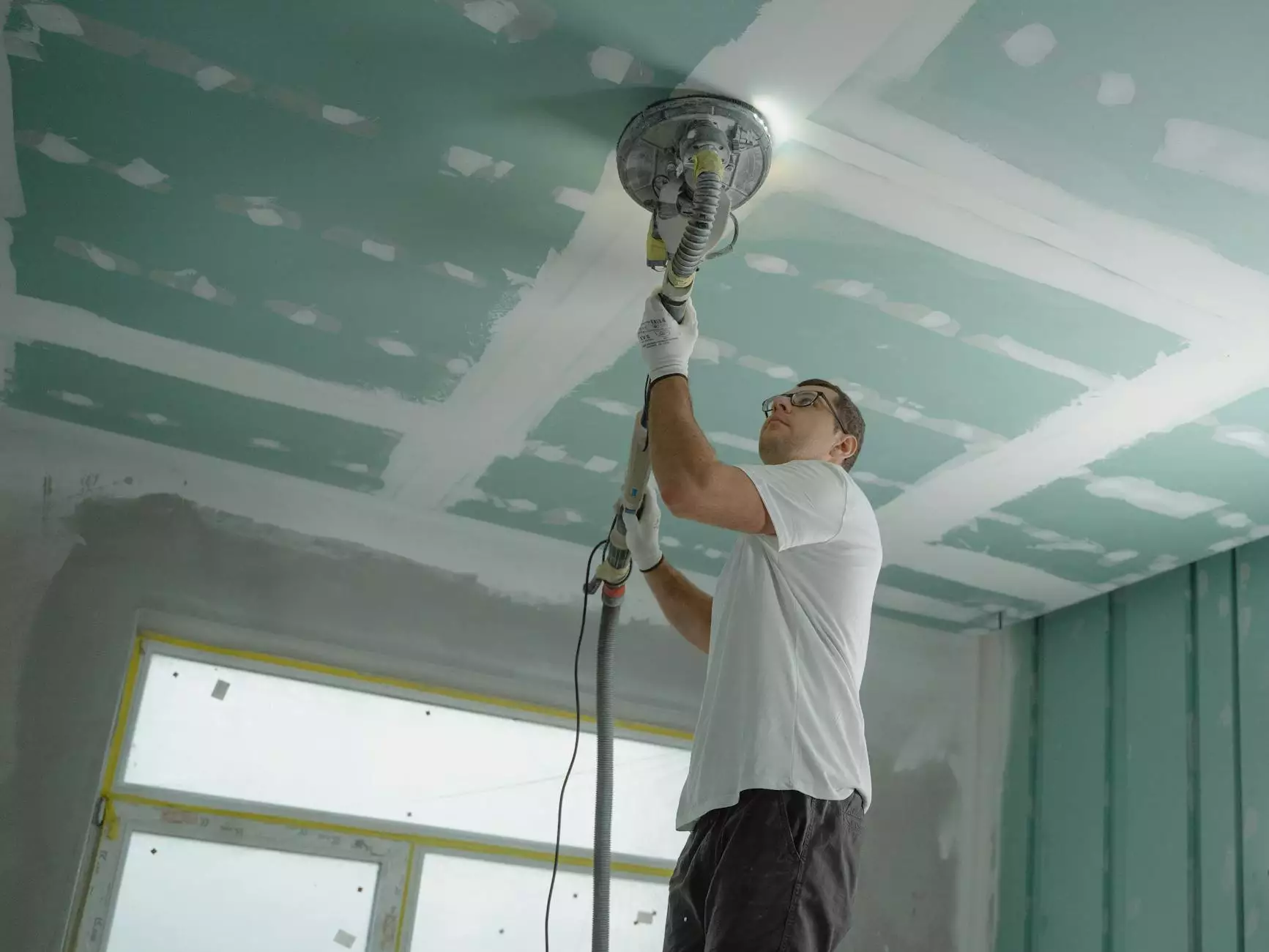Replaster Pool Options: Choosing the Right Solution for Your Swimming Pool

Owning a swimming pool is a source of joy, relaxation, and fun during hot summer months. However, over time, even the most well-maintained pools can start to show signs of wear and tear. One of the most crucial aspects of pool maintenance is the replastering process. This article delves deep into various replaster pool options, helping you make informed decisions that can elevate your pool's aesthetic and functional value.
Understanding the Need for Pool Replastering
Replastering your pool is more than just an aesthetic upgrade; it is a necessary maintenance task that enhances the durability and safety of your pool. Over the years, the pool plaster can crack, chip, or discolor due to exposure to chemicals, sunlight, and wear. Neglecting this issue can lead to deeper structural problems, which might require expensive repairs.
Signs That Your Pool Needs Replastering
- Rough Surfaces: If the surface feels coarse or sandpaper-like, it may be time for a replaster.
- Discoloration: A white, faded, or stained surface can diminish the appeal of your pool.
- Cracks or Chips: Visible damage not only looks unsightly but can lead to leaks.
- Algae Growth: If algae continues to grow, despite regular cleaning, your plaster surface may be compromised.
Different Replaster Pool Options
When it comes to replastering your pool, several options are available, each with its unique set of benefits. Understanding these options will help you choose the best material for your specific needs and budget.
1. Traditional Plaster
Traditional plaster, primarily composed of cement, sand, and water, is one of the most common replastering materials.
- Cost-Effective: It is the most affordable option, making it suitable for budget-conscious pool owners.
- Quick Installation: The installation process is relatively fast, typically taking just a few days.
- Natural Look: Offers a classic, smooth appearance that complements most pool designs.
2. Aggregate Plaster
Aggregate plaster, which incorporates materials such as quartz, granite, or glass beads, provides a more durable finish compared to traditional plaster.
- Enhanced Durability: The addition of aggregates makes it resistant to chipping and cracking.
- Variety of Finishes: Available in various textures and colors, allowing for personalization.
- Longer Lifespan: This option generally lasts significantly longer than standard plaster.
3. Pebble Tec
Pebble Tec is a decorative finish that features natural pebbles mixed with cement.
- Unique Aesthetic: Provides a natural, spa-like appearance that many homeowners desire.
- Non-Slip Surface: Offers better grip, making it safer for pool users.
- Color Options: Comes in various colors and styles to match your home's decor.
4. Glass Finish
A glass finish uses recycled glass particles, creating a stunningly smooth and shiny surface.
- Luxurious Appearance: The glossy finish enhances the water's color and clarity.
- Stain Resistant: Less prone to staining compared to traditional plasters.
- Eco-Friendly Option: Often made from recycled materials, contributing to environmental conservation.
5. Hybrid Options
Some pool owners choose to mix different materials for a bespoke finish, often referred to as hybrid replastering.
- Customization: Allows for combining the benefits of various materials.
- Unique Design: Ideal for creating a one-of-a-kind look for your swimming pool.
- Enhanced Performance: Can improve the durability and aesthetics of the swimming pool.
Benefits of Replastering Your Pool
Replastering your pool comes with numerous benefits that extend beyond just appearance. Here are some compelling reasons to consider this essential maintenance:
1. Improved Aesthetics
Replastering revitalizes the look of your pool. A fresh coat of plaster or an upgrade to higher-quality materials can enhance your outdoor space, make it more inviting, and increase overall property value.
2. Enhanced Safety
Rough or damaged surfaces can lead to injuries. Replastering provides a smooth surface, minimizing the risk of cuts and slips when entering or exiting the pool.
3. Increased Lifespan of the Structure
A well-done replastering job can extend the life of your pool significantly. By sealing cracks and filling chips, you prevent further damage that can be more costly to repair.
4. Lower Maintenance Costs
Updating your pool’s plaster can decrease the need for regular maintenance and repairs, saving you money in the long run. An updated surface is easier to clean and maintains chemical balance better.
5. Elevated Property Value
A well-maintained pool can enhance the value of your property. Potential buyers view a refurbished pool as a significant advantage, which can translate to higher selling prices.
Choosing the Right Contractor for Your Replaster
Finding a reliable contractor for your pool replastering project is crucial. Here are some tips on how to select a qualified professional:
- Research Credentials: Look for licensed and insured contractors with experience in pool renovations.
- Read Reviews: Check online reviews and testimonials from previous clients to gauge their reputation.
- Ask for Quotes: Obtain multiple estimates to compare pricing and services offered.
- Inquire About Materials: Ensure the contractor uses high-quality materials that suit your specific needs.
- Warranty and Service: Choose a contractor who provides warranties for their work and ongoing support if issues arise.
Maintaining Your Newly Replastered Pool
After investing in replastering your pool, maintaining it is vital to ensure it stays in top condition. Here are some maintenance tips:
1. Regular Cleaning
Keep the pool clean by regularly skimming debris, brushing the walls, and vacuuming the bottom. This prevents algae growth and stains.
2. Chemical Balance
Monitor and maintain proper chemical levels (pH, alkalinity, chlorine) to protect your new plaster from deterioration.
3. Avoid Harsh Cleaners
Use gentle cleaning products specifically designed for pool surfaces to avoid damaging the plaster.
4. Inspect for Damage
Regularly inspect the pool for any signs of damage or wear, addressing issues promptly to prevent further problems.
Conclusion
Replastering your pool is not just about aesthetics; it’s about maintaining the safety, longevity, and enjoyment of your swimming facility. With a variety of replaster pool options available, from traditional plaster to luxurious glass finishes, pool owners have many choices to enhance their pool area. By selecting the right materials and working with a qualified contractor, you can transform your pool into a beautiful and safe oasis for family and friends. Invest in your pool today to enjoy the benefits for years to come!









